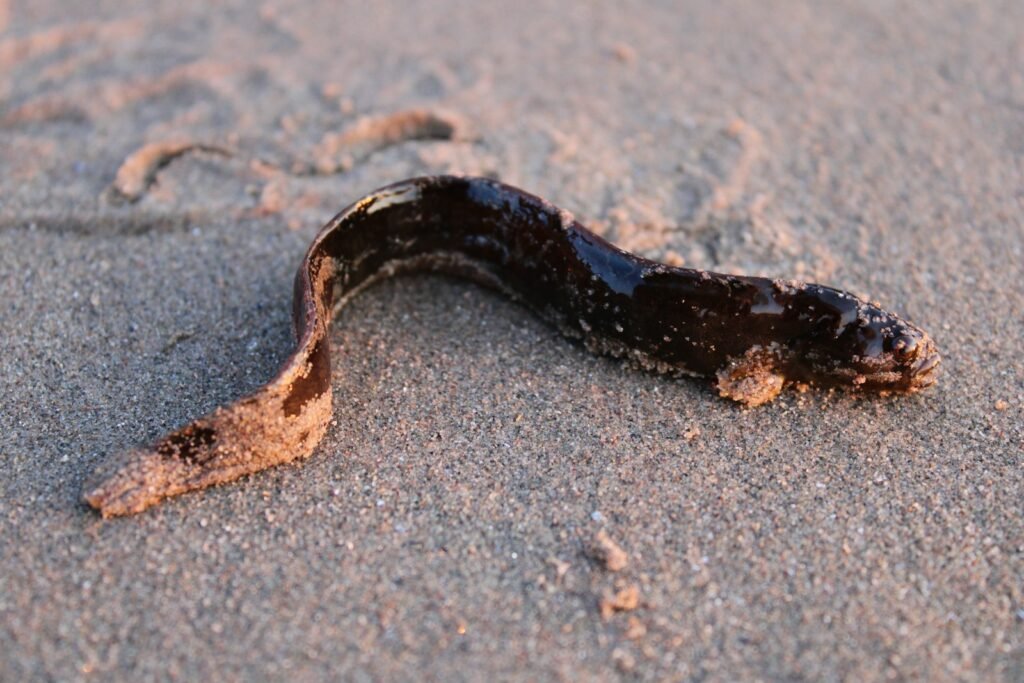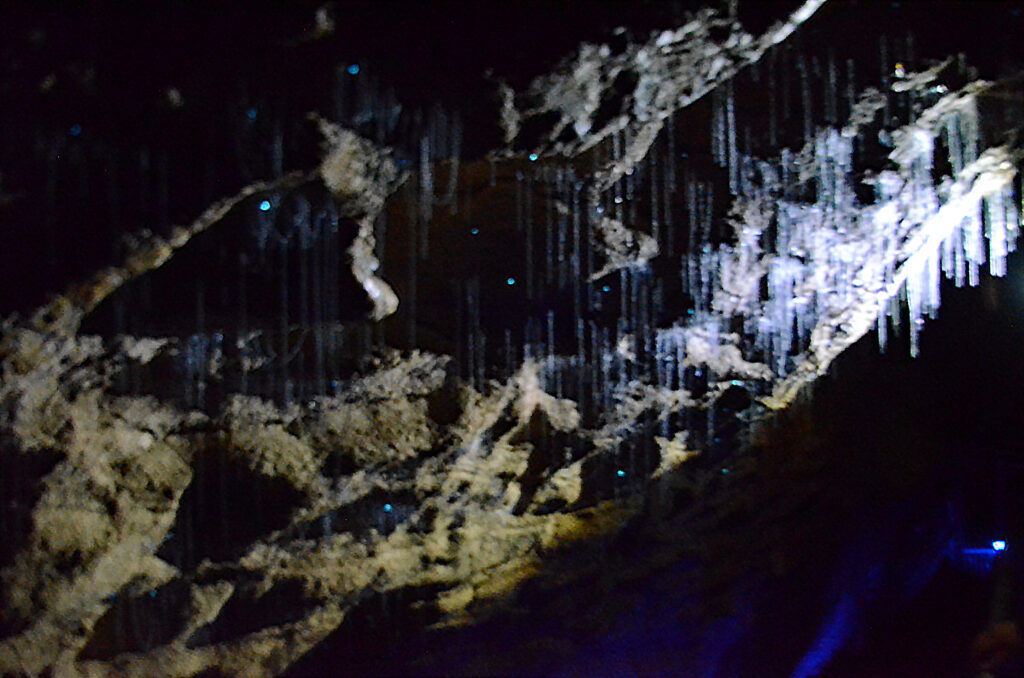Picture this: you’re walking along a remote Scottish beach in 1808 when you stumble upon something that defies all logic. A massive, serpentine creature with bristling hair lies washed up on the shore, its alien form stretching nearly 60 feet in length. Your heart races as you realize you might be looking at proof that sea monsters are real. For the people of Stronsay in the Orkney Islands, this wasn’t just imagination—it was their startling reality. What they discovered that day would spark one of the most fascinating cases of mistaken identity in natural history, involving Victorian scientists, heated debates, and a revelation that would change how we understand the ocean’s mysteries.
The Stronsay Beast: A Monster Emerges from the Waves

The discovery began like something from a Gothic novel. Local fishermen on the island of Stronsay spotted what appeared to be the carcass of an enormous sea serpent tangled in kelp along the rocky coastline. The creature’s remains were unlike anything they had ever seen—covered in what looked like coarse, bristling hair and sporting a long, snake-like neck that seemed to stretch endlessly.
Word of the discovery spread like wildfire through the small island community. The local natural history society was immediately contacted, and soon sketches and measurements were being taken of this apparent sea monster. The creature measured an astounding 55 feet in length, with appendages that resembled flippers and a head that seemed almost reptilian in nature.
Victorian Science Meets Maritime Mystery

When news of the Stronsay Beast reached Edinburgh, the scientific community was thrown into a frenzy. This was the height of the Victorian era, a time when natural history was experiencing a golden age of discovery. New species were being catalogued regularly, and the idea that unknown creatures might lurk in the ocean’s depths wasn’t entirely far-fetched.
Dr. John Barclay, a prominent anatomist at Edinburgh University, took a particular interest in the case. Based on the sketches and descriptions provided by the islanders, he became convinced that they had discovered a new species of sea serpent. He even went so far as to give it a scientific name: Halsydrus pontoppidani, honoring the Danish naturalist Erik Pontoppidan who had written extensively about sea monsters.
The scientific establishment was divided. Some researchers supported Barclay’s claims, while others remained skeptical. The debate raged in academic journals and scientific societies throughout Britain.
The Anatomy of a Misidentification

What made the Stronsay Beast so convincing as a sea serpent was its remarkable appearance after decomposition. The creature’s “hair” was actually decomposed muscle fibers that had separated and taken on a bristly texture. This phenomenon, known as pseudohair, is common in decomposing marine mammals and can create an almost furry appearance that’s completely foreign to most observers.
The elongated “neck” that seemed so serpentine was likely the creature’s backbone, exposed and extended as the surrounding tissue decomposed. Marine mammals, especially large whales, can undergo dramatic changes in appearance as they decay, often taking on forms that bear little resemblance to their original shape.
Decomposition Science: How Dead Whales Become Sea Monsters

The transformation of a whale carcass into an apparent sea monster follows a predictable pattern that scientists now understand well. As a whale dies and begins to decompose, gases build up inside the body, causing it to bloat and distort. The skin often sloughs off in patches, revealing underlying tissues that can look completely alien.
The whale’s vertebral column, being made of sturdy bone, often remains intact long after softer tissues have decomposed. This creates the illusion of a long, serpentine neck, especially when viewed from a distance or by untrained observers. The flippers, too, can take on strange shapes as the flesh around them decays.
Temperature, salinity, and marine scavengers all play roles in this decomposition process. In the cold waters around Scotland, decomposition happens slowly, allowing these distorted forms to persist long enough to wash ashore and confuse witnesses.
The Basking Shark Connection

Modern analysis suggests that the Stronsay Beast was most likely a basking shark, the second-largest living shark species. These gentle giants can grow up to 40 feet in length and are common in Scottish waters. When a basking shark decomposes, it loses its distinctive dorsal fin and gills first, leaving behind a carcass that can look remarkably serpentine.
The basking shark’s cartilaginous skeleton decomposes differently than bone, creating unique patterns of decay. The head often separates from the body early in decomposition, leaving behind what appears to be a long, thin neck. This phenomenon has been responsible for numerous “sea serpent” sightings over the centuries.
Scientific Skepticism Emerges

Not everyone in the Victorian scientific community was convinced by the sea serpent explanation. Several prominent naturalists, including Sir Everard Home, began to question the identification. Home, a respected comparative anatomist, studied the available evidence and concluded that the remains were likely those of a large shark, not a new species of sea serpent.
The skeptics pointed out inconsistencies in the witness accounts and noted that the creature’s anatomy didn’t match what would be expected from a reptilian sea serpent. They argued that the Victorian enthusiasm for discovery was perhaps clouding scientific judgment.
This debate represented an important moment in the development of scientific methodology. It highlighted the need for physical evidence and careful analysis rather than relying solely on witness accounts and sketches.
The Role of Victorian Media and Public Fascination

The story of the Stronsay Beast captured the Victorian imagination in ways that pure scientific discovery rarely could. Newspapers across Britain reported on the find, often embellishing details to make the story more sensational. The idea of sea monsters lurking in British waters was both thrilling and terrifying to the public.
This media attention put additional pressure on scientists to provide definitive answers. The public wanted to know whether sea serpents were real, and the scientific community felt compelled to respond. Unfortunately, this urgency sometimes led to hasty conclusions rather than careful analysis.
The case also reflected the Victorian era’s complex relationship with the natural world. While scientific understanding was advancing rapidly, there was still room for wonder and mystery in the public consciousness.
Physical Evidence and Its Limitations

One of the most frustrating aspects of the Stronsay Beast case was the lack of preserved physical evidence. By the time serious scientific attention was focused on the discovery, much of the carcass had been lost to tides, scavengers, and decomposition. Only a few vertebrae and some other fragments were collected and preserved.
This highlights a common problem in cryptozoology and unusual biological discoveries. Without proper preservation techniques and immediate scientific response, valuable evidence can be lost forever. The Victorians lacked many of the preservation methods we take for granted today.
The surviving fragments were later examined by multiple scientists, but their degraded state made definitive identification challenging. This ambiguity allowed the sea serpent theory to persist longer than it might have otherwise.
Comparative Analysis with Known Species

As more whale and shark specimens became available for study, scientists began to see clear parallels between the Stronsay Beast and known species. The measurements, bone structure, and decomposition patterns all pointed toward a large marine vertebrate rather than a mythical sea serpent.
The comparison with basking shark carcasses was particularly compelling. Multiple instances of decomposed basking sharks had been mistaken for sea serpents, establishing a clear pattern. The Stronsay Beast fit this pattern perfectly, from its size and shape to the characteristic “pseudohair” formation.
Modern marine biology has provided us with extensive knowledge of how different species decompose in marine environments. This knowledge allows us to understand historical mysteries like the Stronsay Beast with much greater confidence.
The Globster Phenomenon

The Stronsay Beast belongs to a category of mysterious marine discoveries known as “globsters”—unidentified organic masses that wash ashore and defy easy identification. These discoveries have been reported from around the world, often sparking speculation about unknown species or cryptids.
Most globsters turn out to be decomposed whales, sharks, or other known marine animals. The decomposition process can be so dramatic that even experts can struggle to identify the original creature. Modern DNA analysis has helped solve many of these mysteries, but the Victorian era lacked such tools.
The fascination with globsters reflects humanity’s enduring curiosity about the ocean’s mysteries. Even today, unusual marine discoveries can capture public attention and spark scientific investigation.
Modern Forensic Marine Biology

Today’s marine biologists have sophisticated tools for identifying decomposed marine animals. DNA analysis, advanced imaging techniques, and comprehensive databases of marine species make it much easier to solve mysteries like the Stronsay Beast. These tools would have immediately identified the creature as a known species rather than a sea serpent.
Forensic marine biology has become an important field, helping to identify everything from whale strandings to illegal fishing activities. The techniques developed for this field could easily resolve historical mysteries like the Stronsay Beast if similar discoveries were made today.
The evolution of these identification methods shows how far marine science has advanced since the Victorian era. What seemed like an unsolvable mystery in 1808 would be routine identification work today.
The Cultural Impact of Sea Serpent Legends

The Stronsay Beast case contributed to a rich tradition of sea serpent legends that have persisted across cultures and centuries. These stories reflect humanity’s complex relationship with the ocean—a mixture of fear, fascination, and respect for the unknown depths.
Sea serpent legends often serve as metaphors for the unpredictable and dangerous nature of ocean travel. In an age when maritime commerce was crucial but perilous, these stories provided a way to process the very real dangers of the sea.
The Victorian era’s particular fascination with sea serpents also reflected the period’s scientific optimism. If new species were being discovered regularly on land, why not in the ocean? This optimism, while ultimately misguided in this case, drove important advances in marine biology.
Lessons for Modern Cryptozoology

The Stronsay Beast case offers valuable lessons for modern cryptozoology and the investigation of unusual biological discoveries. It demonstrates the importance of collecting physical evidence quickly, applying rigorous scientific methodology, and maintaining healthy skepticism even in the face of exciting discoveries.
The case also shows how cultural expectations and media attention can influence scientific interpretation. The Victorian desire to discover new species may have predisposed researchers to see a sea serpent where none existed.
Modern cryptozoologists study cases like the Stronsay Beast to better understand how misidentifications occur and how to avoid them. These historical examples provide crucial context for evaluating contemporary claims of unknown species.
The Evolution of Marine Monster Mythology

The Stronsay Beast represents a transition point in marine monster mythology. As scientific understanding of ocean life improved, traditional sea serpent legends began to evolve into more nuanced explanations of unusual marine discoveries.
This evolution reflects broader changes in how humans understand and interact with the natural world. The movement from mythological to scientific explanations represents a fundamental shift in human consciousness that was particularly pronounced during the Victorian era.
However, the enduring appeal of sea monster stories suggests that they fulfill a deeper human need for mystery and wonder. Even as scientific explanations become more sophisticated, the allure of the unknown continues to captivate us.
Scientific Method and Historical Perspective

The Stronsay Beast case illustrates the importance of the scientific method in resolving mysteries. The initial excitement and speculation gave way to careful analysis and evidence-based conclusions, demonstrating how science self-corrects over time.
This historical perspective also shows how scientific knowledge builds upon itself. Each generation of researchers has access to more sophisticated tools and accumulated knowledge, allowing for better understanding of phenomena that puzzled earlier scientists.
The case serves as a reminder that scientific knowledge is always evolving. What seems mysterious or inexplicable to one generation may be routine knowledge to the next.
The Ongoing Mystery of Ocean Life

While the Stronsay Beast turned out to be a known species, the ocean continues to harbor genuine mysteries. New species are still being discovered regularly, and the deep sea remains one of the least explored environments on Earth.
Modern marine biology has revealed that the ocean is far more diverse and strange than Victorian scientists could have imagined. From giant squids to bioluminescent creatures, the real ocean is filled with wonders that rival any sea serpent legend.
This ongoing process of discovery keeps the spirit of exploration alive while grounding it in rigorous scientific methodology. The balance between wonder and skepticism that characterized the best Victorian scientists remains relevant today.
Conclusion: When Reality Surpasses Fiction

The story of the Stronsay Beast reveals how our understanding of the natural world has evolved from mythology to science. What began as a terrifying sea serpent discovery transformed into a lesson about marine decomposition and the importance of scientific rigor. The Victorian scientists who first encountered this mystery were working with the best tools and knowledge available to them, and their mistakes are understandable given the limitations of their era.
Perhaps most remarkably, the real ocean has proven to be far more extraordinary than any sea serpent legend. From the massive basking sharks that likely inspired the Stronsay Beast to the countless other marine species we’re still discovering, the truth about ocean life surpasses even the most imaginative Victorian fantasies. The transformation of a rotting whale into an apparent sea monster reminds us that nature’s own processes can be more mysterious and captivating than any myth.
What other “monsters” in our history books might simply be misunderstood natural phenomena waiting for modern science to reveal their true nature?




